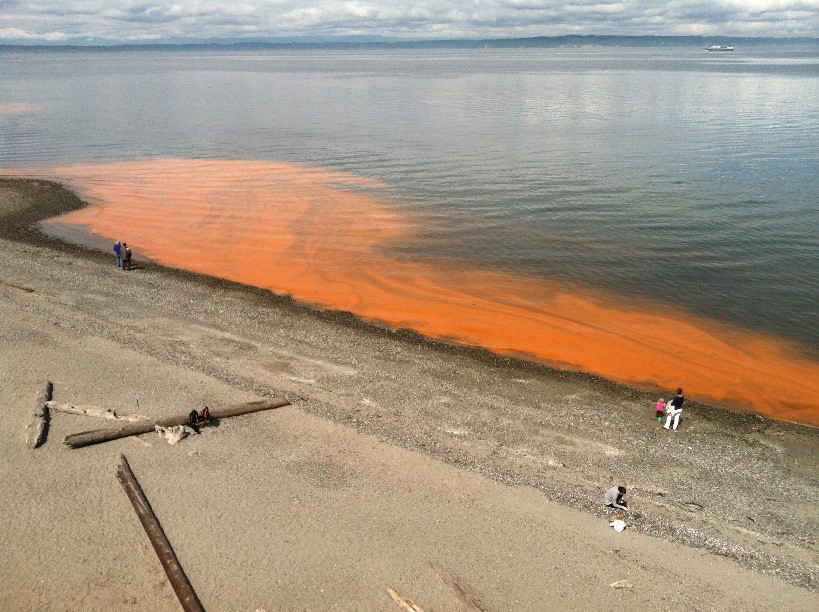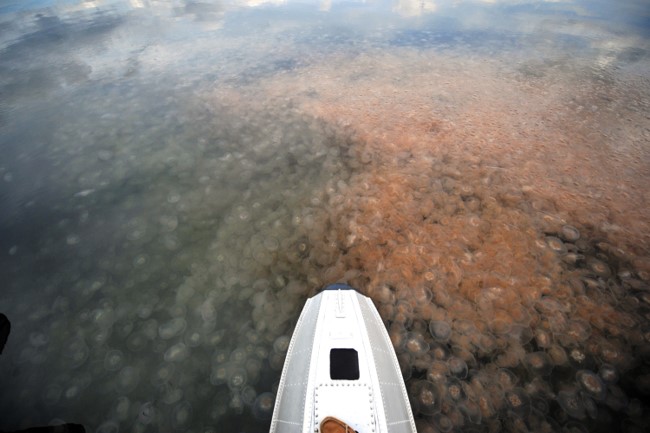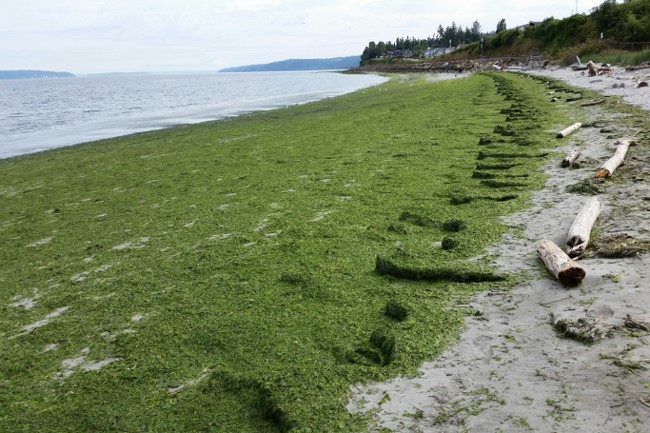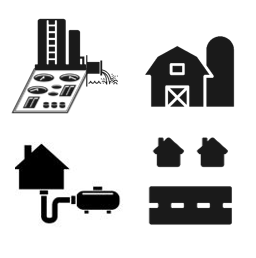Reducing nutrients in Puget Sound
Excessive levels of nutrients from human sources, such as nitrogen and carbon, are negatively impacting water quality in Puget Sound. This can lead to low dissolved oxygen, which impacts the health of aquatic life. Through the Puget Sound Nutrient Source Reduction Project, we collaborate with Puget Sound stakeholders and tribes to find solutions for reducing human sources of nutrients to protect Puget Sound.
Excess nutrients are a problem in Puget Sound
Too many nutrients, mainly nitrogen, result in excessive algal growth because nutrients act like fertilizer for algae and aquatic plants. When these algae and plants die, their decomposition uses up oxygen that marine animals needs to survive. This can especially be a problem in shallow inlets or bays and throws the health of Puget Sound off balance.
In addition to low levels of oxygen, other effects of excess nutrients include:
- Acidification, which prevents shellfish and other organisms from forming shells.
- Shifts in the number and types or organisms that live on the seafloor, resulting in changes in the food chain.
- Increased nuisance macro-algae, which can impair the health of eelgrass and shellfish beds.
- Increased harmful algal blooms and other nuisance species, such as jellyfish.
- Changes in food web dynamics.

Noctiluca scintillans bloom at Saltwater State Park in Des Moines, WA.

A jellyfish "smack" observed from our Eyes Over Puget Sound monitoring program.

Nuisance macroalgae on a Puget Sound beach.
The Puget Sound Nutrient Source Reduction Project aims to improve Puget Sound by better managing human nutrient sources.
Sources of nutrients
Nutrients enter Puget Sound from natural processes and ocean upwelling and are essential for a healthy ecosystem. Human sources of nutrients, however, can lead to the excess or imbalance of nutrients in Puget Sound.
Human sources of nutrients include:
- Wastewater discharged from sewage treatment plants.
- Using too much fertilizer, which enters waterways when it rains.
- Poor land management, especially with livestock .
- On-site septic systems.
What Ecology is doing about it
We are implementing the Puget Sound Nutrient General Permit for wastewater treament plants, which will address the largest source of excess nutrients going into Puget Sound. We're working collaboratively with Puget Sound stakeholders through the Puget Sound Nutrient Source Reduction Project and Puget Sound Nutrient Forum to find solutions for reducing other human sources of excess nutrients. We were directed by the state Legislature to research a nutrient credit trading program for Puget Sound. Read our Recommendations Report that summarizes our recommendations for designing and implementing a nutrient credit trading program in Puget Sound for facilities covered under the Puget Sound Nutrient General Permit to achieve faster and more efficient nutrient reductions.
Related links
Contact information
Ben Rau
Watershed Planning Unit Manager
Ben.Rau@ecy.wa.gov
360-742-6529



